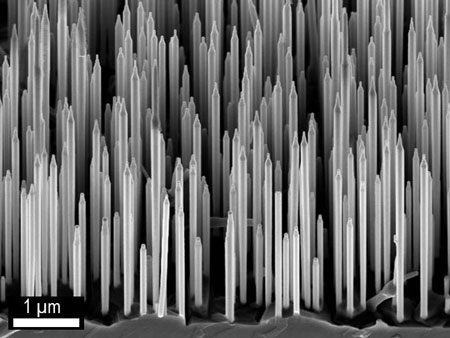Nanowires Explained: Properties, Synthesis, and Revolutionary Applications
Introduction to Nanowires
Nanowires are groundbreaking in the field of nanotechnology, offering new possibilities for electronic, photonic, and energy applications. These tiny filaments, with diameters in the nanometer scale, stand out for their ability to conduct electricity and light, unlocking new capabilities for technological innovation.

Physical Properties and Types of Nanowires
Nanowires are known for their exceptional physical properties, which are largely influenced by their nanoscale dimensions. These properties include enhanced electrical, thermal, and optical behaviors that are not found in their bulk material counterparts. The types of nanowires can be broadly categorized into the following:
- Semiconducting Nanowires: These include silicon, germanium, and compound semiconductors like gallium arsenide (GaAs) and indium phosphide (InP), which are extensively used in electronics and optoelectronics for their superior charge carrier mobility and direct bandgap properties.
- Metallic Nanowires: Made from metals such as gold, silver, and copper, metallic nanowires are valued for their exceptional electrical conductivity and plasmonic properties. They play a crucial role in fabricating transparent conductive films, sensors, and enhancing the performance of photovoltaic cells.
- Magnetic Nanowires: Composed of materials like iron, nickel, and cobalt, magnetic nanowires are explored for their applications in data storage, magnetic sensing, and spintronics due to their unique magnetic properties at the nanoscale.
- Oxide Nanowires: Oxide materials such as zinc oxide (ZnO) and titanium dioxide (TiO2) form nanowires with interesting photocatalytic and photoelectrochemical properties, making them suitable for environmental remediation and solar energy conversion.
Each type of nanowire has its unique set of properties and applications, driven by its material composition. This diversity allows for a wide range of functionalities and uses across different technological and scientific fields.
Manufacturing Techniques
The creation of nanowires employs various sophisticated techniques, from top-down approaches like lithography and etching to bottom-up strategies such as chemical vapor deposition and template-directed synthesis. The choice of method depends on the required nanowire material, dimensions, and orientation, each affecting the final properties and applicability of the nanowires in specific domains.
Characterization of Nanowires
Understanding the properties and behaviors of nanowires is crucial for their effective application. Characterization techniques play a vital role in this, providing insights into the nanowires' structure, composition, and functionality. Key methods include:
- Scanning Electron Microscopy (SEM): Offers high-resolution images to analyze the morphology and surface structure of nanowires.
- Transmission Electron Microscopy (TEM): Allows for the examination of the crystallographic structure and defects within nanowires.
- X-ray Diffraction (XRD): Used to determine the crystalline structure and phase composition of nanowire materials.
- Raman Spectroscopy: Provides information on the vibrational modes of the nanowires, useful for identifying material composition and structural properties.
These techniques enable researchers to finely tune the properties of nanowires for their intended applications, ensuring optimal performance and functionality.
Applications in Technology
Nanowires are critical in advancing the capabilities of electronic devices, renewable energy solutions, and medical diagnostics. Their role in developing high-efficiency solar cells, batteries, LEDs, and transistors underscores their significance in modern technology. Moreover, their utility in biosensors and drug delivery systems demonstrates their versatility and potential for cross-disciplinary innovation.
Advancements and Future Prospects
The ongoing research and development in nanowire technology promise a future where electronic devices are more efficient, medical diagnostics are more precise, and renewable energy solutions are more effective. As fabrication techniques improve and integration challenges are overcome, nanowires will play an increasingly important role in driving technological progress across various sectors.
Challenges and Research Directions
While nanowires offer considerable promise, challenges related to their production uniformity, integration, and environmental impact remain. Research is directed towards addressing these challenges, enhancing the nanowires' performance, and expanding their applications to fully realize their technological potential.
Further Reading
South African Journal of Chemical Engineering, Nanowires Properties and Applications: A Review Study
Chemistry of Materials, Introduction: 1D Nanomaterials/Nanowires
